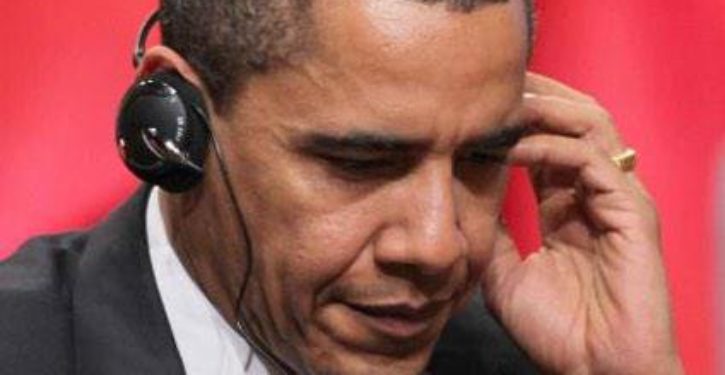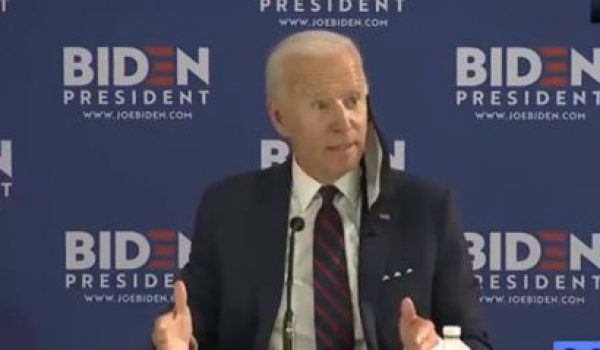
On Saturday, RedState’s Stu Cvrk posed, in essence, that headline question in an article about LTC Alexander Vindman, whom we increasingly understand to have been the real leaker (it’s not legitimate to call him or anyone else a “whistleblower”) behind the Ukraine-phone-call dust-up of 2019.
Cvrk pulls no punches in his evaluation of Vindman, and speaks for many in that regard. I could have overlooked Vindman as – in Cvrk’s words – a “typical overweight, rear-echelon staff puke who picked up a Purple Heart from a roadside IED that hit his vehicle.” Life throws a lot at you; you suck it up. But I was disgusted that Vindman would put on his dress uniform and parade for photo ops for the purpose of framing straw-man smears against the president to Congress, after he was ordered not to make that appearance by his commander-in-chief. The CINC has every right, and every law on his side in the circumstances, to give that order.
For that sort of violation of your oath, you at least sneak in the back door in civs. Don’t drag the prestige of the U.S. Army into your political posturing
Will this presidential election be the most important in American history?
Remember, neither Vindman nor anyone else had a beef in law against the president. The testimony “against Trump” was entirely about disputing Trump’s policy toward Ukraine.
Wrong answer. POTUS is elected by the people to make that policy. It is not the prerogative of a subordinate to challenge POTUS on his constitutional actions and call it “whistleblowing.” It’s insubordination – and it made Vindman a star accomplice in a vicious, divisive, time-wasting “impeachment” process that imposed shamefully on the American people and should never have been undertaken.
Suspicion
At any rate, Stu Cvrk goes on in his article to postulate that, as regards the many unnamed “sources” the media use to perpetrate their “news” about dramas like the impeachment, it’s not really in-person sources at all. The “leaks” may not be person-to-person, but electronic.
“It is entirely possible,” says Cvrk, “that the real sources of the classified information leaks were through electronic eavesdropping of White House communications with other federal agencies and foreign governments. Thus,” he continues, “‘unnamed sources’ are misdirection to hide the real sources of the leaks – unauthorized illegal electronic surveillance. The media stories could have been written and slanted as cover stories to protect the non-human technical surveillance wiretaps.”
Do read the rest of his treatment, as it is well articulated and sound. The reason I’m posting this today, however, is that I wrote about this back in March 2018, and I believe the Trump team actually discovered and began rooting out just such a communications vulnerability in the first two weeks it was in the White House.
That doesn’t mean no vestiges of such an eavesdropping network were left in 2019. I suspected there was at least one vestige at the time, and that was the classified system on which things like presidential phone-call notes were normally stored, and thus made accessible to staff workers. If you remember, a chief substance of the “whistleblower” complaint about the Ukraine phone call was the hilarious point that the phone-call notes had been stored on a compartmented IT system that is not broadly accessible to staff members.

That is a ridiculous point, at least if it’s framed as a violation of some kind. (It was denounced as an instance of storing classified material on a system intended for more highly classified information.) The use of the compartmented system is at the discretion of – you guessed it – the president of the United States, whose authority is supreme for all those executive-department systems. He can store his pizza order on it if he wants to.
Even classified systems are eavesdropping devices, if they’re being used by people with clearances to perpetrate leaks. The leakers’ annoyance at being thwarted in that regard came burning through the Ukraine “whistleblower” complaint like a blowtorch.
Catching them red-handed?
But Cvrk is talking about eavesdropping that connects the eavesdropper outside the White House directly with the trons flowing inside it. That’s the network I think was interdicted shortly after Trump took office.
Cvrk refers to possibilities like long-dwell passive sensors and literal cable taps as “Obama embeds,” meaning they were installed by the Obama administration before it left, for the purpose of spying on Trump. As is clear in my March 2018 article, I thought of it the same way. I am at one with Cvrk in not putting this past the Obama administration at all.
From out here, we can have no way of proving that such a thing was done by the previous administration. But – again, see my 2018 article – the opportunity to do it was not only ample, it was directly on point. Between 2014 and 2016, Obama made exactly the upgrades to the entire network of IT and telecom systems in the White House that would have created such an opportunity.
The New York Times, reporting on it (see link in my article), pointed out that key White House systems had not been updated since the 1970s. As I explained in 2018, that meant that it was actually harder to spy on some of those systems before the upgrade than after it. The Obama upgrade after 2014 made it easier to “tap” (figuratively) into key systems, because they had been linked and digitized, rather than having air gaps and using analog storage methods.

What cued me to the likelihood that the Obama administration had used this project to embed an eavesdropping enterprise was the abrupt, still to this day unexplained dismissal of Obama’s Chief Information Security Officer, Cory Louie, on 2 February 2017.
Obama had created the CISO position in 2015, during the White House systems upgrade. Louie was its original incumbent. I reiterate that we have no basis for charging him with complicity in a spy-trap set by the Obama administration. But given the odd leaks (about presidential diplomatic phone calls!) that had occurred in the days just before he was removed, we are justified in assuming that Trump wasn’t happy with Louie’s CISO performance.
My estimate is that the dismissal meant more than that. It doesn’t indict Louie personally to deduce that the Trump team found most if not all of the “Obama embeds” right around the time Louie was dismissed.
As mentioned in 2018, Trump also brought in as the new CISO, in March 2017, a heat-seeking missile in the form of Robert Joyce, formerly the chief of the Office of Tailored Access Operations at NSA. TAO at NSA is the “offensive” hacking division. In other words, Joyce was the guy who knew all the tricks: the one screenwriters love to hang plots on in the movies.
We can hope that Joyce’s prowess put the White House ahead of the power curve on a separate “vestige” of the “Obama embeds,” one that I have raised repeatedly. That vestige is the intelligence IT system “cloud,” which was contracted to Amazon Web Services in 2013. The cloud is the perfect virtual dead-drop for leaked information, if accomplices are properly placed with access to it. So in the sense that the cloud persists, with multiple agencies and people in multiple secure locations accessing it — and is still administered by AWS — there may well be an Obama embed that’s still in play. Ideally, forensic inspection of the cloud would have scrubbed and bleached it by now. Its users would know they can’t act there under cover of ill-audited neglect. But we can’t be sure.
Other events in perspective
Perusing the White House movements at the time (February-March 2017) puts the developments that immediately followed, in March 2017, in a very useful perspective. Recall that it was in March 2017 that James Wolfe, the long-time Senate staffer, leaked an unredacted copy of the first FISA application on Carter Page to the media.

Ponder this point: if Trump dismantled the spy ring’s electronic intelligence-gathering capability in February 2017, that probably prompted a decision to move directly to a new phase of the anti-Trump operation (as Lee Smith calls it, the Permanent Coup). That may have figured in the reasoning behind the drastic decision to leak a complete, unredacted FISA application to the media.
Meanwhile, I suspect that Devin Nunes, whose request to the DOJ for access to that FISA application was made 8 March 2017, could well have been cued to the entire Obama spying enterprise in part by revelations about the “Obama embeds” at the White House.
Nunes’s request was effectively for the first Page FISA application, because he asked for all the FISA applications from the year 2016. The Nunes letter was sent just before Democratic Senator Mark Warner’s nine-day spurt of apparently related text messages with Adam Waldman, which culminated on 17 March in Warner’s entry into the congressional SCIF, presumably to view the Page FISA document. And it was the first application from October 2016 that Wolfe leaked on 17 March 2017 via a batch of page images, as sundance at Conservative Treehouse has meticulously determined. Note that the Nunes letter was also from Adam Schiff, the ranking HPSCI member, meaning Warner had ample time to know about the request to DOJ before it was sent.
Previously Nunes had been on the Trump transition team, and probably learned about what the White House had uncovered on the “Obama embeds” not long after it happened (i.e., sometime in February 2017).
Nunes thus had multiple, well-informed reasons to be on the trail of the Obama administration’s spying methods, even before learning about the “unmasking” epidemic with its trove of evidence at the NSC staff. Nunes’s 22 March 2017 press conference on that matter was the first that most Americans had heard of such goings-on, but he and Trump’s people had already known of other things for weeks.
Remember also the date of Trump’s notorious tweet on being “wiretapped”:
Terrible! Just found out that Obama had my "wires tapped" in Trump Tower just before the victory. Nothing found. This is McCarthyism!
— Donald J. Trump (@realDonaldTrump) March 4, 2017
It’s pretty clear a new packet of information came his way shortly before that tweet. We know Trump had been briefed on the “unmasking” by NSA’s Admiral Rogers in November 2016. But something prompted him to tweet about being “wiretapped” on 4 March 2017, while Devin Nunes was finalizing his 8 March FISA request to the DOJ.
The real unnamed sources
If the anti-Trump narrators haven’t been relying (or at least not much) on literal electronic eavesdropping in the last couple of years, where are they getting their “unnamed source” information?
Some of it may still come from unnamed sources with actual access. This seems to be the case with the increasingly rare hostile leak designed to preempt and sabotage the president’s policy intentions for something that is actually happening. The leakers have had no compunction about burning intelligence sources and methods in order to achieve this end. They just want to get a narrative out there before Trump’s own actions define what it’s about.
But I find it doubtful now that most leaks have even that going for them – and for the same reason I think another explanation fits better. So little of the unnamed-source information actually pans out. It never turns into anything. It doesn’t have consequences or ongoing significance, as it would if the information were valid.
Rather, its impact lies almost entirely in what it induces people to do, once the information has been lobbed out there. The information itself flashes, and most of the time it subsides, emitting a little smoke, into ash.
To keep its embers alive requires constant fanning. Adam Schiff, staffers in the executive departments, the usual half-dozen media outlets – all have to work very hard to keep it from simply floating away into oblivion.
No, most of the unnamed-source phenomenon is something else. It’s something chronicled as “media war room tactics” funded by dark-money donors; previewed in Fusion GPS and the Steele dossier; and commemorated with a Pulitzer Prize for the mainstream media participants.
This has been there from the beginning, of course, but I think a whole lot of what Americans hear now as “unnamed source” information is nothing more than what we in the intelligence business call MSU: Making [Stuff] Up.





